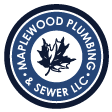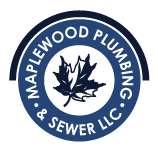Would you buy a house without looking inside first? Of course not. So why would you risk thousands on sewer repairs without seeing exactly what’s wrong? Our state-of-the-art sewer camera inspections take the guesswork out of sewer line problems, showing you precisely what’s happening beneath your feet.
Expert Sewer Camera Inspections for St. Louis Homeowners
Living in a historic St. Louis home has its charms – and its challenges. With many local sewer systems dating back to the early 1900s, knowing what’s happening inside your pipes isn’t just smart – it’s essential. Our sewer camera inspections reveal:
- Hidden cracks before they become expensive emergencies
- Root invasions that are secretly choking your pipes
- Bellied or sagging pipes that collect debris
- Joint separations that can leak sewage into your yard
- Grease and debris buildup before it causes a backup
- The exact condition of your aging clay pipes
Our Professional Sewer Camera Inspection Process
-
Initial Assessment
- Thorough evaluation of your plumbing concerns
- Review of your home’s plumbing history
- Clear explanation of the inspection process
-
Advanced Camera Investigation
- HD video recording of your entire sewer system
- Real-time monitoring and problem identification
- Precise depth and location mapping
- Documentation of all issues found
-
Comprehensive Report
- Detailed analysis of pipe conditions
- Video and photo documentation
- Clear explanation of any problems found
- Written recommendations for repairs
- Upfront pricing for any needed work
When Do You Need a Sewer Camera Inspection?
- Buying a Home? Don’t risk inheriting someone else’s sewer problems
- Frequent Backups? Find the root cause of recurring issues
- Slow Drains? Discover hidden blockages before they completely stop flow
- Strange Odors? Locate sewer gas leaks at their source
- Planning Renovations? Know your sewer line’s condition before adding new plumbing
- Preventive Maintenance? Catch small issues before they become expensive repairs
Don’t Wait Until It’s Too Late…
The worst time to discover a sewer problem is when sewage is backing up into your home. Our St. Louis sewer camera inspections help you catch issues early, saving you thousands in emergency repairs and protecting your home from devastating sewer failures.
Why Choose Us for Your St. Louis Sewer Camera Inspection?
- Latest HD camera technology for crystal-clear imaging
- Experienced technicians who know what to look for
- Complete documentation of all findings
- Honest, straightforward explanations
- No upselling – we show you exactly what we find
- All work performed by our in-house team
Special Sewer Camera Inspection Services for St. Louis Homeowners
-
Pre-Purchase Inspections
- Protect your investment before buying
- Document existing conditions
- Negotiate repairs with sellers
- Prevent costly surprises
-
Insurance Claim Documentation
- Professional evidence for claims
- Detailed damage documentation
- Expert analysis for adjusters
- Complete written reports
-
Preventive Maintenance
- Regular system check-ups
- Early problem detection
- Planned maintenance scheduling
- Cost-saving recommendations
Get the Full Picture Today
Stop wondering what’s happening in your sewer lines. Contact Maplewood Plumbing now for a professional camera inspection that shows you exactly what you’re dealing with. Remember – when it comes to sewer problems, what you can’t see CAN hurt you.



